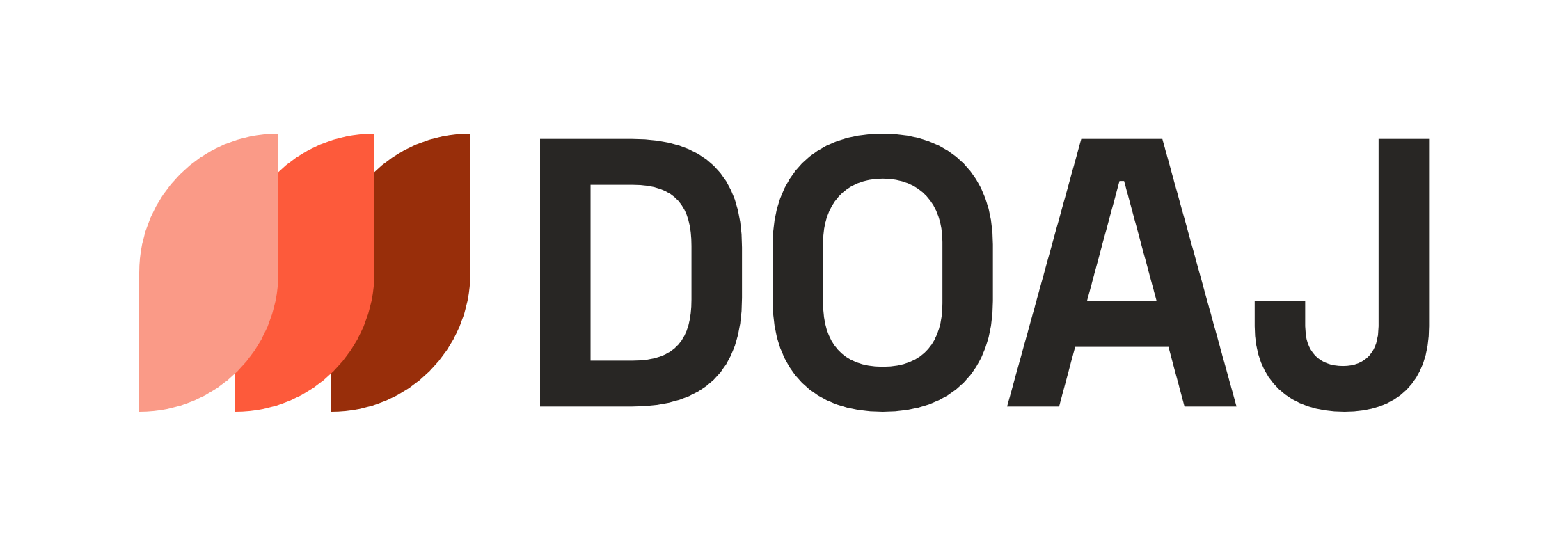Instructions for Authors
Authors are welcome to submit manuscripts of articles at any time. Articles are published as soon as they have passed the peer review and production process.
Reviews of books and other media are invited by the Review Editor. Reviews are subject to a two-stage assessment by Review Editor and Editor-in-Chief. Authors and publishers are invited to suggest publications for review that fall into the scope of M&M. Potential reviewers may also express their interest in reviewing a specific publication that falls into the scope of M&M and their field of expertise. The Review Editor will consider all suggestions, but there is no guarantee that a particular publication will be reviewed or that an invitation to write a proposed review will be made. Please send your suggestions and expressions of interest to mm-journal@mdw.ac.at.
The “Forum” section of the journal provides a space for contributions that do not fall into the established categories of peer-reviewed articles or reviews, but are of lasting value to the field of study covered by the scope of the journal. Although such submissions will not be subject to the standard peer-review process, feedback from at least two advisors will be obtained to enable the editor-in-chief to make an informed decision about whether to publish the contribution or not, and to advise authors on how to improve their submissions. Interested authors should contact M&M's editorship in advance to clarify whether a contribution is suitable for the "Forum" section: mm-journal@mdw.ac.at.
Authors are kindly asked to acquaint themselves and comply with M&M's journal policies. The following guidelines should be observed in preparing manuscripts and complementary materials for submission.
Length of Articles
Articles should range between 5,000 and 12,000 words (reviews: between 1,000 and 3,000 words; contributions to the "Forum" section: variable), including footnotes and references.
Language
M&M accepts submissions in American English, British English, or any other standard variety of English. Consistency within one article is required, encompassing adequate spelling and the correct usage of dates and terms (e.g., underground or subway, bar or measure, crotchet or quarter note). Regarding punctuation, M&M – in the interests of visual clarity and uniformity – provides binding specifications regardless of the English version chosen.
Non-discriminatory language is mandatory for all submissions. How this is accomplished may vary. For advice on the use of inclusive language concerning, e.g., gender, sexual orientation, race, ethnicity, culture, and/or religion see, for example, these guidelines.
Anonymization
M&M employs a double-blind peer review process. M&M will prepare article manuscripts accordingly before sending them to reviewers, editing the text, if necessary, and deleting identifying file information. However, authors can aid this process by excluding identifying information from the main article manuscript (avoid/minimize self-citation, at least refer to own publications in third person; avoid mentioning grants and similar information). This information can be added during later stages of the editing process.
Manuscript Formatting
Manuscripts should comply with the following guidelines:
- Times New Roman, 12 point, section headings bold
- 1.5 line spacing, left justified, no word division
- Quotations of five lines or longer are set as block quotations in a separate, indented paragraph. Please do not use indentation in the text apart from this case.
- Italicization is used for book, journal, and CD titles as well as titles of other larger works, such as operas and films, and for emphasized terms. Non-English terms are italicized, if their usage is uncommon in English (this will be a case-by-case decision). Italicization of the original text is kept in quotations.
- Boldface, underscore, all caps, and other forms of emphasis should generally be avoided in the interests of clarity. There may be exceptions, e.g., in the case of transcriptions of handwritten manuscripts.
- Punctuation
- Double quotation marks are used for quotations as well as titles of articles, songs or album tracks, or parts of larger works, e.g. an aria from an opera. Double quotation marks are also used to refer to words and phrases, e.g.: the word “music” has five letters, or when using words/phrases in an ironic way, or as an invented/coined expression.
- Single quotation marks are used for quotations within quotations.
- Commas and periods go within quotation marks: “This is the end of the quotation.” “This is how I feel,” she said. Note, however, the following case: “This is a quotation” (Smith 2020).
- Ellipses are indicated using three spaced periods: “This is the beginning of an example sentence . . . that ends like this.” Ellipses are used to signal the omission of parts from a quoted passage or from dialogues and direct discourse. No ellipses are used before the first or after the last word of a quotation, even if the beginning or the end of the sentence has been omitted.
- Comments, additions, or changes of word order within quotations should be included in square brackets [like this].
- A hyphen (-, U+2010) is used in compound words, e.g. “20th-century music.”
- An en dash (–, U+2013), without surrounding spaces, is used to indicate a range of years, pages, etc.: 2010–2020.
- An en dash with surrounding spaces – like this – is used to interjections, interruptions, etc.
- Numbers are spelled out from zero to nine, for higher numbers numerals are used.
- Ordinal numbers are used as follows: 152nd, 23rd, etc. The letters should not be superscript.
- Footnotes are used, not endnotes. Place footnote indicators after a given punctuation mark.
Citation Style
M&M’s citation style is based on The Chicago Manual of Style (17th ed.), chapter 15, using author-date in-text citation, e.g. “(Smith 2020: 145),” “Smith (2020) argues that...,” “(see Miller 2002, 2010; Smith 2019, 2020),” etc. Details on cited publications are listed in a separate references section (see below).
In-text citations of publications with more than three authors should be cited by using the first authors name and “et al.” (Smith et al. 2019). However, all authors should be mentioned in the references section.
"ibid." should be used for consecutive citations of the same source, e.g. (ibid.: 136).
When citing sources without individually identified authors, as is often the case with website content or official reports, the name of the organization responsible for the content should be used, e.g. (UNHCR 2020).
When citing a revised version of a publication, the year of the original edition may be indicated, if the information is relevant for the argument: (Kuhn [1962] 1970). The number of the used edition of a publication has to be indicated in the references section, unless it is the original edition.
In-text citation is used for all sources referred to in the text, including ethnographic or archival data and multimedia sources.
Unpublished Interviews and personal communications are cited as follows: name, format (interview/personal communication/email/text message, etc.), date: (Bruno Nettl, pers. comm., April 19, 2004), (Adelaida Reyes, email, August 16, 2019). Note that the date format should be consistent throughout the text (month-day-year or day-month-year).
References
The references section should include all textual sources referred to in the text, no matter if printed or online. If applicable, separate sections titled “Multimedia Sources,” “Ethnographic Data” (interviews etc.), or “Archival Data” should be included to list the respective kinds of sources referred to in the text.
Order of entries: alphabetical; chronological in case of more than one item of the same author. To differentiate entries with the same author and the same year, please add a, b, c, etc. to the year. Single-author entries are positioned before a multiauthor entry that begins with the same author’s name.
Three em (—, U+2014) dashes are used for entries with a repeated author or group of authors: ———.
DOIs or other persistent identifiers should be provided for all online-only sources. URL and access dates should be provided in cases in which no persistent identifier exists for an online source. Please note that page numbers may vary between the online version and the hard copy version of a book and make sure to provide the correct references and page numbers.
Please provide English translations for non-English titles in square brackets after the original title.
For guidance regarding formatting of the references see this list of examples, the references sections of articles published in M&M, or The Chicago Manual of Style (17th ed.), chapter 15.
Acknowledgements
Acknowledgements, if applicable, should be submitted in a separate MS Word docx file. This file will not be sent to peer review. This file can be uploaded via the submission form.
Glossary
If appropriate, the main text can be supplemented by a glossary explaining key terms. The glossary should be included in the manuscript as a separate section preceding the references.
Figures, Tables, Audio and Video Examples
Figures should ideally be provided as PNG files in the best quality possible (at least 300 dpi) or as SVG vector graphics. Tables should be created using the table tools of MS Word. Audio examples should ideally be provided in a common lossless audio format, such as WAV or FLAC. Video examples should ideally be provided in an MPEG format of the highest possible quality.
Figures, tables, and audio/video examples have to be uploaded as extra files via the submission form. Additionally, their position in the published versions (HTML and PDF) should be indicated in the manuscript, e.g. {insert Figure 1 here}. These indicators in the manuscript should also be accompanied by captions (including credits). It should be ensured that figures, tables, and audio/video examples are numbered (Figure 1, Figure 2, Table 1, Audio Example 1 etc.) and referred to in the main text (see Figure 1; see Table 1; see Audio Example 1).
If the figures, tables, or audio/video examples are not the authors', they are required to make sure to have written permission to use them under M&M's Creative Commons Attribution-NonCommercial 4.0 International license (CC BY-NC 4.0). Note that M&M's author's agreement stipulates that authors guarantee that the work is their original creation and does not infringe any other copyrights or property rights of third parties. The authors are liable for claims by third parties and hold M&M and its publisher mdwPress harmless in this regard.
Article Abstracts
Authors of articles are required to enter an English abstract of not more than 300 words in the online submission form. Authors are encouraged to submit additional abstracts of not more than 300 words in languages relevant to a given submission. These additional abstracts should be included in the article manuscript, preceding the main text and indicating their respective language.
Reviews are not accompanied by abstracts.
Keywords and Disciplines
Authors are asked to list keywords (approx. 5) and the main disciplines relevant to their contribution in the submission form. These keywords and disciplines will be included in the metadata of the published contribution.
Author Information and Bio
Authors are required to provide basic information on themselves in the submission form (name, email address, country, contributor's role). They are invited to provide additional information, such as institutional affiliation, ORCID, etc.). This information may be added in the submission form when editing the list of contributors.
Authors are required to submit a short bio of not more than 70 words in a separate MS Word docx file. This file can be uploaded via the submission form.



